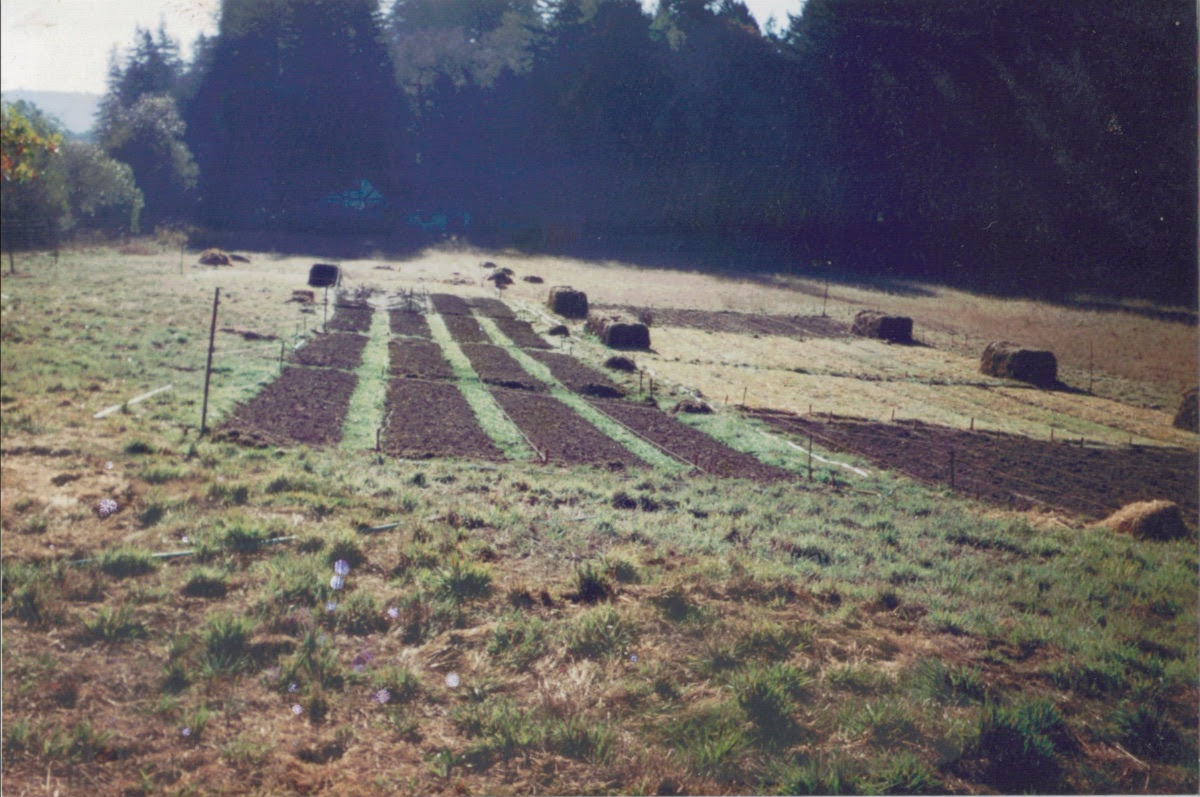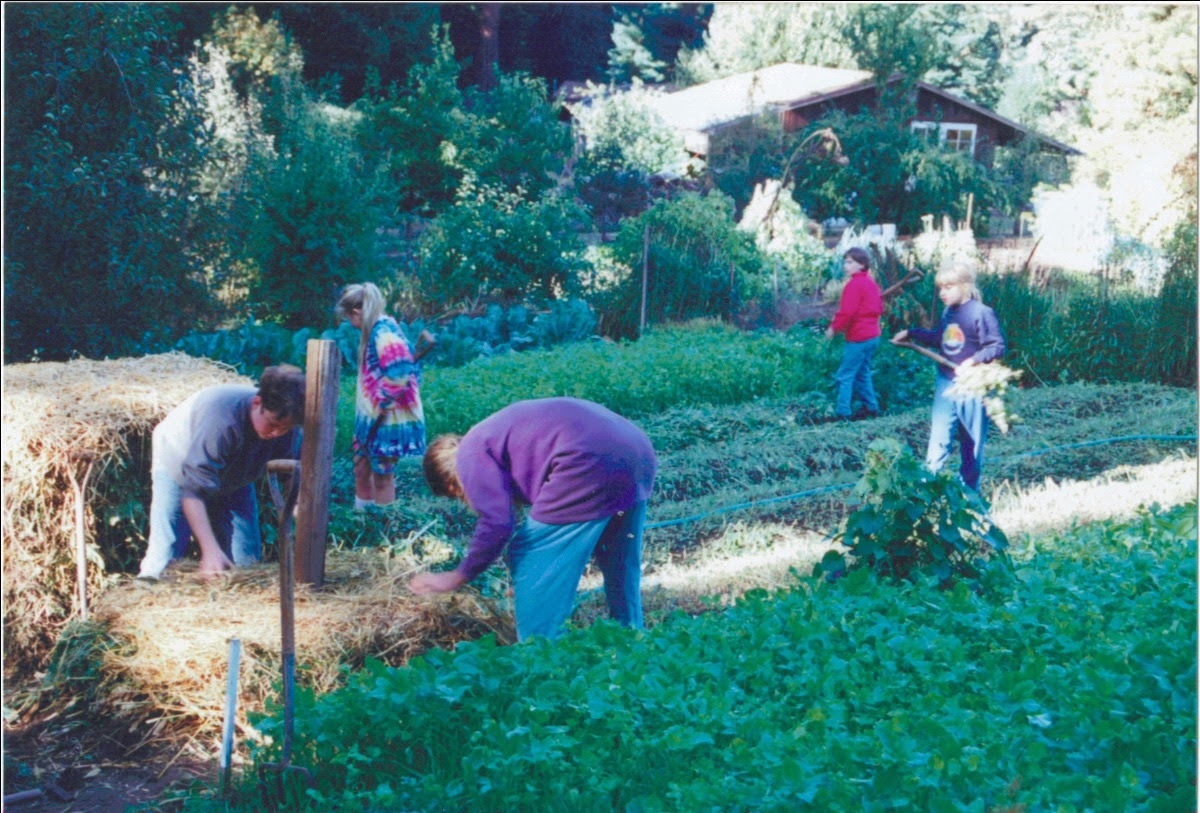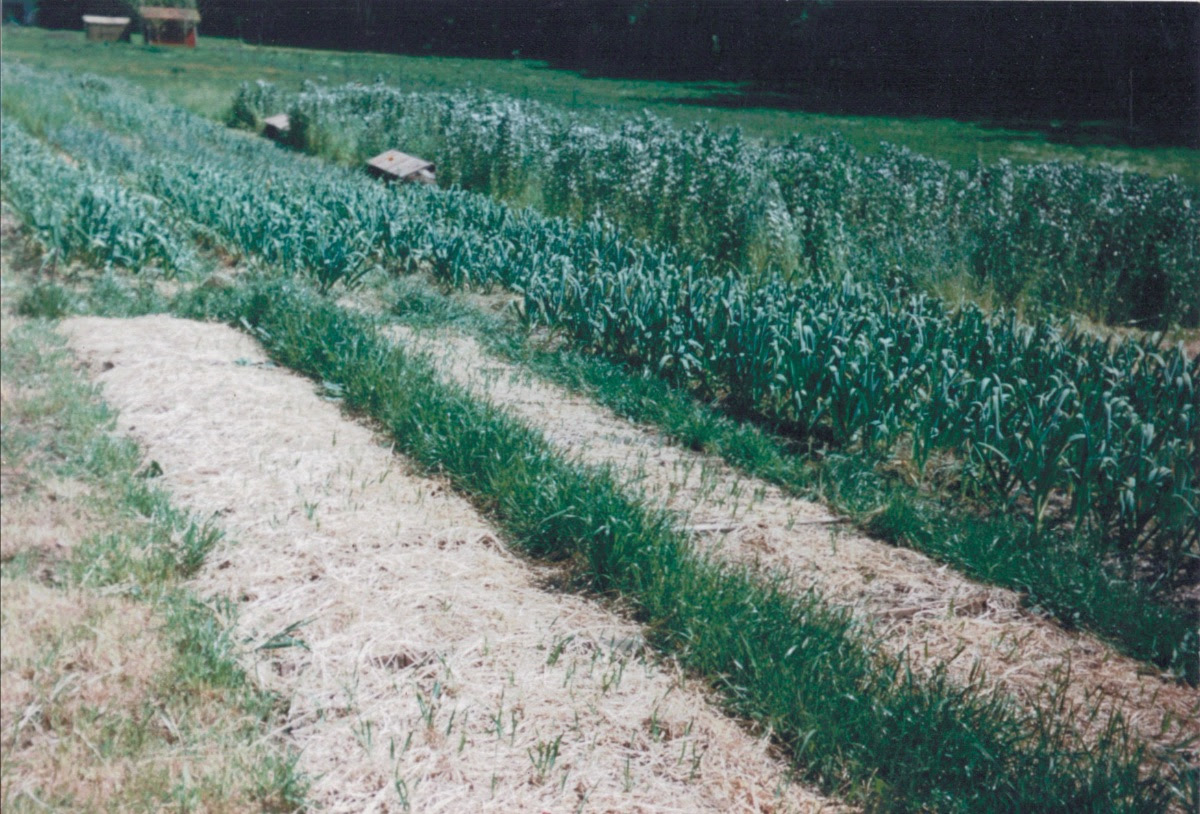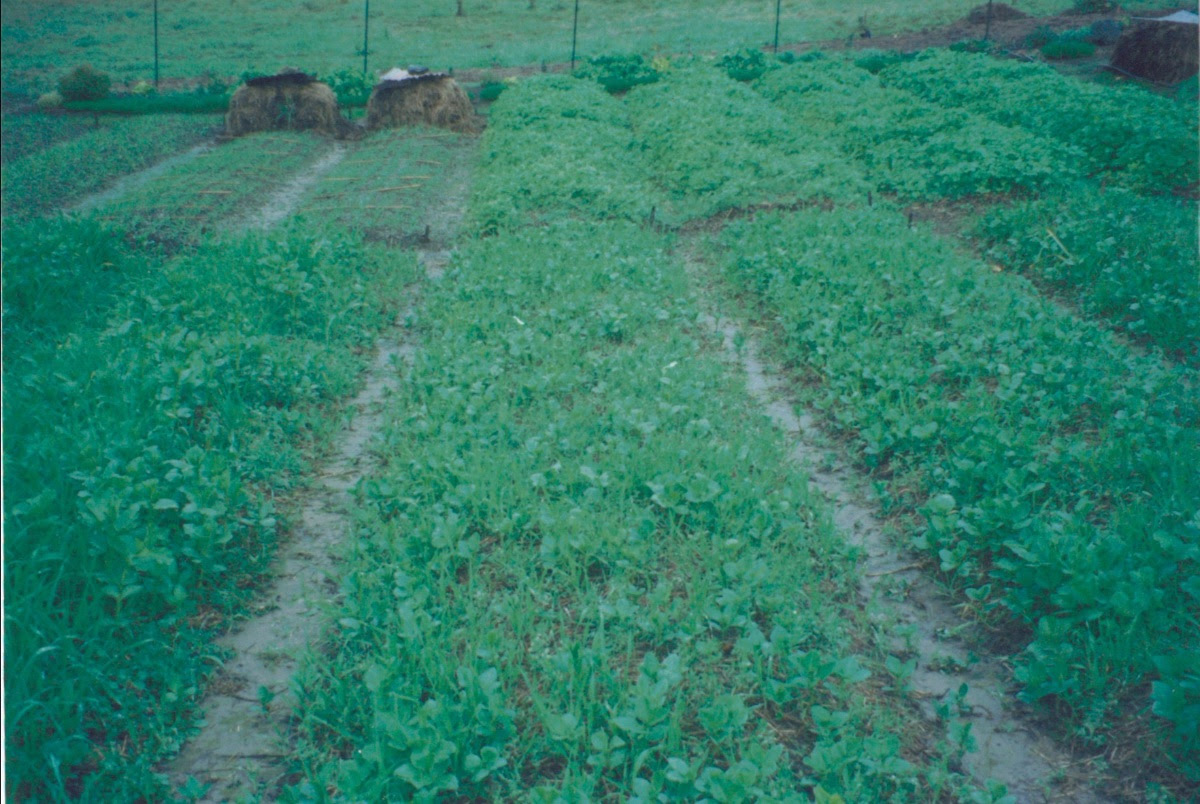March 2021 | THE BAREFOOT GARDENER — An Interview with Yeti
There’s a need to find one’s place on the map. Not just the physical, but where are you in the rhythm and cycle of nature. The more you can locate yourself there, the more things work out …

I have lived a lot of different lives in this one, and some of them parallel. Sitting on the back deck, Yeti launched into describing the activity he was currently engaged in this past January.
Pruning
What I’ve learned after over ten years of pruning is that all the pruning books and workshops tell you what to cut off a tree. I realized that doesn’t matter. It’s not important what you cut off but what you leave on. Because you’re having a conversation with the tree and its moving energy. When you cut a branch off, that energy goes into the branch next to it. So, a conversation can be a poetic exchange or a screaming fight. I prefer to be a little more harmonious.
Where did they get pruned last year? How did they respond? I can tell from the different colored growth, and often a ring will show where the new growth started. You’re working with wood. In carpentry, you’re working with deadwood. A fruit tree responds when you make a cut. What matters is how the tree responds and in which direction after you’ve made the cut. It’s more important to anticipate what the tree’s likely to do than how it looks. So, when I make a cut, I picture how the tree’s going to look next year and possibly three to four years down the line.
I ask, “How can I help the tree?” Sometimes, it doesn’t need much. When you’re growing the tree to have fruit it would be helpful to know how and where the tree flowers! There are two core ways of pruning: A) spur trees, such as cherries, apples, pears, and some plums, make fruit in the same place for ten to fifteen years. You don’t need to prune much once you have the core framework. The trouble is that you may cut off too many spur twigs. B) Terminal bearers such as figs, persimmon, grapes, peaches, nectarines, and most citrus, flower and fruit on either last year’s or this year’s new growth. If there isn’t much fruit, then you prune harder.
When I come back the next year, I see what happened. I prune it differently, just maintaining it so it hums along. I don’t have general rules like take a third off here, etc. I prune every tree differently.

I came to Sonoma County in 1995. I had an acre farm for twenty years growing grains and heirloom seeds. It’s hard to make money on land. If you’ve inherited land, then you can just about make it work.
I don’t have a plan in my life. I don’t know when I’m going to be here and how I’m going to get there. As a farmer, I sometimes work the weekend. Nature operates its own way. Sometimes you need to hustle and put in overtime because you’re dealing with perishable goods. A lot of gardening and orcharding has to do with timing and being aware or in tune with the rhythms of nature. Then you can decide how to interfere. For example. pulling weeds can be done in a positive way if they then become compost. You can plant legumes to enrich the soil.
We are bound by the daily rhythm of sunrise to sunset, the lunar rhythm, the annual ones of equinoxes and solstices, and longer rhythms, say, seven years or 3,000 years. There’s a need to find one’s place on the map. Not just the physical but where are you in the rhythm and cycle of nature? The more you can locate yourself there, the more things work out without you having to do a lot. The beauty is that stuff happens out there whether I do something or not.
In orchards, there are certain clovers that I don’t hoe but let reseed, and I also bring in clovers. Clovers have a parasite growing on their roots, and their rhizobacteria will take nitrogen in the air and transform it into nitrogen available to the plant itself. Nitrogen is very volatile. That’s what happens when you till or plow, you release nitrogen from the soil into the air.

Building soil
Most people grow plants from the top down, and I like to grow them from the bottom up. They buy a plant, put it in soil, and add fertilizer and that works. But you’re bringing in resources from outside all the time and it’s high maintenance. If it’s edible, does it have minerals in it?
I work the soil, often for two years, before growing something. It takes two to three years to get good soil going. There are very few places that have four feet of river bottom (rich, loamy soil.) It requires careful cultivation using hand tools. There are ways to use a tractor and do mechanical interventions. Timing is the key. Growing cover crops such as peas produces nitrogen in their roots but when they flower things start to change and nitrogen gets transferred to the seeds for annuals. So, I stop at this point and use a scythe or sickle-bar mower, but not a weed-whacker, to cut the crop cleanly near to the ground. I then add it all to the compost pile.
I’ve done an acre with a scythe and I leave all the roots in the ground. The roots decompose quickly and aerate the soil. If you till in the crop, then you have to wait three weeks while it’s gassing in April/May when the cover crop is peaking, and you lose a lot of compostable crop. When you use a rototiller then the soil becomes fluffy, but you’ve broken up all the soil structure and after watering a couple of times the soil is like cement.

It’s very labor-intensive building soil for two to three years but then you’re cruising. Usually, one needs some digging initially but after that the soil is loose. The key is building the soil because as a farmer in order to make a living you need as much a) water b) sunlight c) nitrogen as possible. You’re selling produce by the pound or box. You want it as heavy and as large as you can get. When we go to the store, we usually pick up the biggest one. When I grow food for myself, I want a) nutrients and b) flavor. Fortunately, they’re the same thing. The flavor comes out of the minerals and helps preserve the vegetable longer.
I’d enrich the nutrients with 50-pound bags of minerals, especially lime. This increases the calcium and also raises the pH because the soil in Sonoma County is very acidy. Often, by looking at plants that are already growing there, you can tell a lot about what the soil is like. For instance, thistles don’t grow in a healthy meadow. They enter when the soil is overgrazed or too compacted. Nature puts them there as if to say, “Keep away while we heal the soil.”
There are many nutrients already in the soil that become more available as you build it up. In the West, we like to pound and pave. We put on our boots and compact the soil without even being aware. So, it’s best to keep the soil loose and not run equipment over it; to place beds in areas with pathways around them. That soil gets deeper and deeper with roots extending down and earthworms going up, so the roots keep searching for minerals. The cover crop after composting helps tremendously with that process.
When you’re bringing in fertilizer it’s to increase the nitrogen, phosphorous, and potassium (NPK). There is tons of phosphorous already in the soil but only 2 to 3 percent is available to plants. As you raise the organic matter in the soil the phosphorous and other minerals become more available because microbes are chewing up organic matter.
Studies were conducted in England on royal lands with grain crops about 150 years ago. The experiments were conducted on 40-acre lots divided into 5-acre parcels and minerals were found that had not been in the soil before planting.
My garden included a diversity of food crops grown in four sections: i) vegetables ii) beans iii) grains iv) cover crop or fallow, and in between, a cover crop every winter. Every four years I would add a summer cover crop. This really bulks up the soil’s organic matter. After eight years you’ve got “cake” out there. I had started with pounded cement. There had been horses on the farm for twelve years. I hoed the grass and made it into compost. Then cover crops. The plants grow better and stronger. They need less water and are less diseased. It’s a high initial input.
One of my visions is to have 5-acre spots set up so that even as people move on, the farm stays there! We’ve lost sight that soil-building is the real 401(k) plan! (A long-term employer-sponsored pension plan in the US.) I always considered my net worth in how many compost piles I had sitting out there in winter.
It takes ten days to make a good compost pile. The compost pile teaches you. After a few months, you know what decomposes and what doesn’t. By the fifth pile, you have it dialed in. It’s a conversation between you and the compost pile. I used to turn my piles after three weeks to see what was going on. Now, I just leave it. It takes a bit longer. In the compost pile, you’re getting a higher temperature and a higher quality of organic matter. It also allows more cover crops to grow in the beds, so you’re getting at least 50 percent more compost each year.
I don’t really know how to grow plants. I grow soil and then the plants grow themselves. We seem to have lost this foresight and prefer getting immediate returns and gratification. In Europe, there used to be cycles of growing and on the seventh year leaving the land to lie fallow. For me, it was four years.
With fertilizers, organic or other, plants aren’t given the time to extend their roots and accumulate minerals because they’re getting a quick shot in the arm in those top two inches.

Fruit Trees
Most people dig a small hole and fill it with compost and fertilizer in a gopher basket, so the roots are happy and don’t venture anywhere. After two or three years the nutrients are gone and there’s no network of roots.
When I plant, I dig a large hole and first put some minerals at the bottom. For that, I use an English digging fork. I then place a gopher basket and fill it only with native soil, followed by lots of compost around the basket. That way the roots have to spread.
Alan Chadwick has been a big influence, although I don’t double dig. I traveled across the country six or seven times and talked to farmers. Everything’s based on location. What works in Lodi doesn’t work in Wisconsin. Watching YouTube farming videos, you have to figure out what works for your location. For example, in Wisconsin, a farmer might spread onions on the ground for two weeks so the green tops die slowly. In Sonoma County they’d be baked in three days, so you need to put them under shade. In Wisconsin, they’d mold under a tree. The more we understand about what’s already happening, the more we can gently step in.
Gardening is not about knowledge. I encourage and inspire people. I try to find out what they already know. The smartest people often get in their own way. It’s just being out there and observing! Then, if you can back it up with some knowledge and experience, all the better.
I observe a lot just walking barefoot. I pick up a lot of vibrations and energies through my feet. To me, it’s so obvious. People say to me, “Why do you walk barefoot?” “I don’t walk barefoot. We both woke up in the morning and you decided to put something on.”
I have respect for all things. I went to my teepee and found a lizard in my bed. My landlady had just adopted a cat. The next day there were five lizards sheltering there. Bluebelly lizards would jump on my feet and do their push-ups. At 4:30 in the afternoon when the last ray of sun was going down, I sat by a wall and a lizard had figured out the same spot. For a couple of weeks, we hung out. Most people are rushing around too much.
I don’t think you need to walk barefoot. For me walking barefoot is to be aware and in touch with my surroundings. At one point people called me “Yeti,” referring to the big, ugly, hairy monster. People who don’t understand often put down what they don’t understand. It doesn’t matter how many times life knocks you down, it’s how many times you get back up. Once I recognized that Yetis only leave their footprints behind in the snow, in other words, they live harmoniously with nature, I said, “Yes, I want to be called ‘Yeti’.”
Our society is very visual at the expense of the other senses. There are many frequencies we don’t see. A video is not actually moving or real. Writing a letter, you tune into each other. I once drove a car from Portland, Oregon to Portland, Maine. We stopped at Burlington, Vermont. I knew my ex-girlfriend had moved there. I called and found that she was literally next door to the place I was staying in. That’s the stuff we’re losing, connecting with each other without high-tech.
Yeti ended on a gardening note: Experiment, try it! Even if it dies, you can always plant more.
James Simon from San Francisco wrote:
1. Stop eating beef, pork, lamb
– animal production and subsequent methane released into the atmosphere account for ~14% of this greenhouse gas, which is many times worse than C02
2. Reduce driving or stop driving
– fossil fuel burning is driving CO2, nitrous oxide, etc. So, how do we do that? This is a problem and part of the answer is to look at where we live and where the amenities that sustain us are. And here is the crux of the problem, people will have to sacrifice for this to happen, i.e. people who live in rural areas that are not in food production or the agriculture industry will have to move. Building good mass transport systems and providing for local amenities requires us to live closer to each other!
3. Folks should build individual or community-based solar or wind power generation as well as storage.
– Well as it happens, this is where better regulation and government policy could really have an impact, we should look at Australia for example, they have the regulatory and industrial environment such that the installed cost per watt is about 1 dollar per watt. This is installed! OK, great, but realistically that still will only be attractive to people who earn more. Now California has rules to include Solar in all new housing construction, which is good, but not enough and again really only helps people that can afford a new house. I can think of a few things here to force solar, for example, mandate all houses, commercial buildings, and apartments install solar, and failing that, apply a carbon offset tax that completely offsets their energy usage. Do we want this? Would it be politically doable? More importantly, as a wealthy person, would you vote for it? Keep in mind that for any commercial property (i.e. apartments), costs will flow down to the tenants. It is unfortunate, but I assume that this will happen. I personally think this would be a good policy as it will drive down emissions because of increased renewable generation, and the sheer cost of it all will also be an incentive for people to reduce their energy consumption.
Of the three recommendations, things that we can all do, all will involve personal sacrifice. I personally believe that this is the problem, we are all in denial that what we do needs to change, so proposals are made that are politically impossible and nothing changes. Nothing changes because people are not willing to actually change. As a result of this, the wealthier among us will complain but actually do just fine. After all, we can afford more for power, water, food, and air conditioning. The poor are the ones that will suffer as they will also have to pay more for power, water, transportation, and food and are more likely to die from lack of air conditioning.
I am not optimistic, but I’ll ask this, what actual changes should we as individuals make?
Restaurant visitor
A steel-blue tuning fork tail
juts from the mud cup,
below a cardboard shelf
to catch the debris,
a line of yellow rimmed mouths
ram open, screaming
then gone-in-a-flash
skimming over the tables,
off hawking for flies.
One thousand flights
without touching the ground
to bring grass stems, spit
and beads of mud
to shape its pendant house –
perhaps, while we still camped in caves
the swallows taught us architecture,
binding earth with flights of fancy.
In and out, skimming heads
and white table cloths,
splitting the narrow swathe
of air that is their portion.
Why do the swallows nest here
and along the eaves of our houses
but to listen to our stories;
our making, our births and dying?
Once they lived among us,
flew through glassless windows
to nest above our beds
Bird of freedom
throat touched blood-red
from plucking thorns
and entering our flesh,
tamped in blue
on every sailor’s arm:
a talisman for devotion
an epic homecoming
or a prayer to lift
a drowned soul to heaven.
By September funneled south
again, urgent, restless, black clouds
sweep on a blue sky,
not sleeping under pond mud
as we once believed but flexing
their streamers, passing zigzag
over sea and farmland
and red Saharan sands,
asleep on the wing
drinking on the wing
steel-blue tail turning for home.
Rebecca Hubbard author of The Garden of Shadow and Delight
Receive the Earth-Love Newsletter, event invitations, and always a poem.
